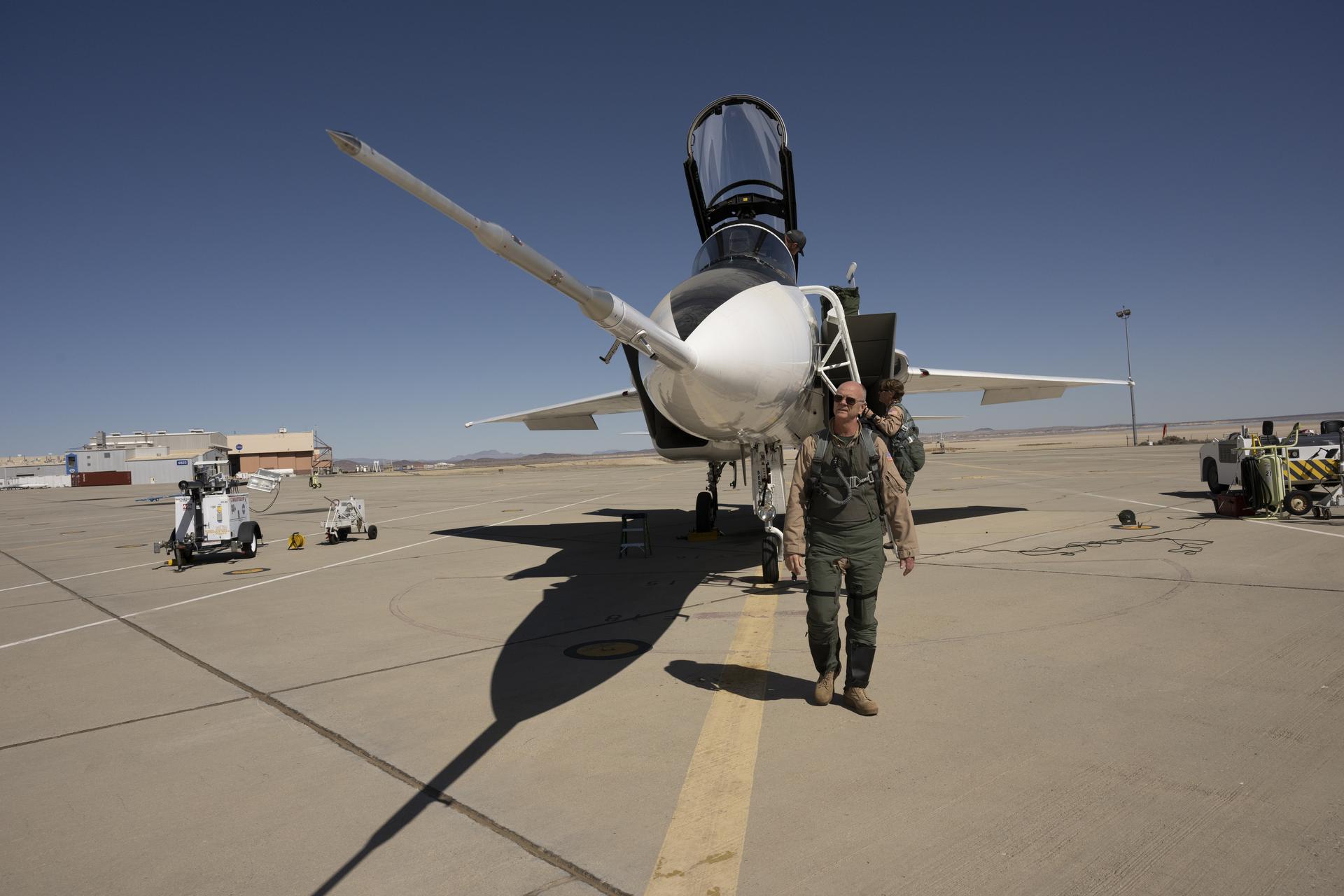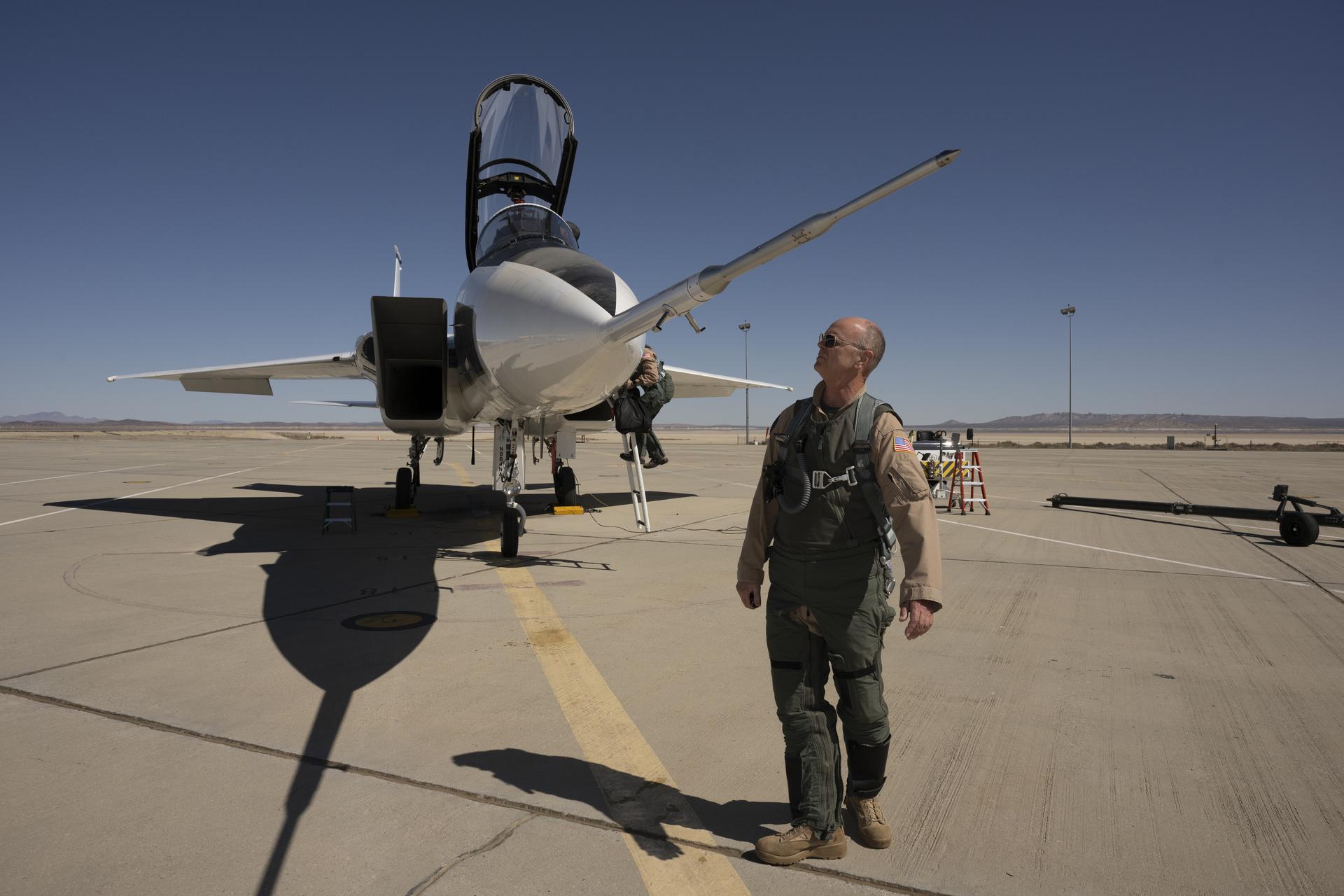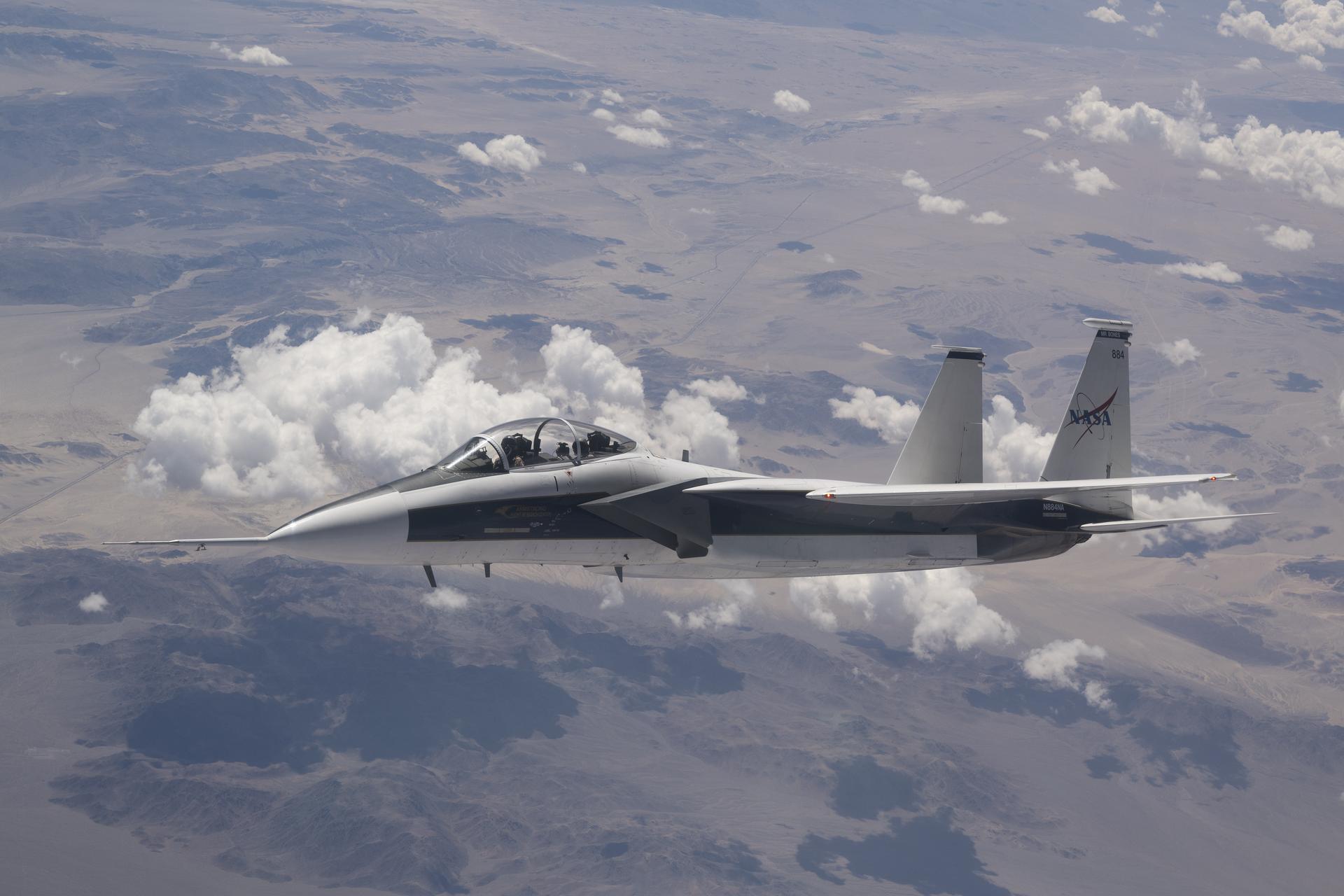3 min read




When you're testing a cutting-edge NASA aircraft, you need specialized tools to conduct tests and capture data -but if those tools need maintenance, you need to wait until they're fixed. Unless you have a backup. That's why NASA recently calibrated a new shock-sensing probe to capture shock wave data when the agency's X-59 quiet supersonic research aircraft begins its test flights.
When an aircraft flies faster than the speed of sound, it produces shock waves that travel through the air, creating loud sonic booms. The X-59 will divert those shock waves, producing just a quiet supersonic thump. Over the past few weeks, NASA completed calibration flights on a new near-field shock-sensing probe, a cone-shaped device that will capture data on the shock waves that the X-59 will generate.
This shock-sensing probe is mounted to an F-15D research aircraft that will fly very close behind the X-59 to collect the data NASA needs. The new unit will serve as NASA's primary near-field probe, with an identical model NASA developed last year acting as a backup mounted to an additional F-15B.
The two units mean the X-59 team has a ready alternative if the primary probe needs maintenance or repairs. For flight tests like the X-59's - where data gathering is crucial and operations revolve around tight timelines, weather conditions, and other variables - backups for critical equipment help to ensure continuity, maintain schedule, and preserve efficiency of operations.
"If something happens to the probe, like a sensor failing, it's not a quick fix," said Mike Frederick, principal investigator for the probe at NASA's Armstrong Flight Research Center in Edwards, California. "The other factor is the aircraft itself. If one needs maintenance, we don't want to delay X-59 flights."
To calibrate the new probe, the team measured the shock waves of a NASA F/A-18 research aircraft. Preliminary results indicated that the probe successfully captured pressure changes associated with shock waves, consistent with the team's expectations. Frederick and his team are now reviewing the data to confirm that it aligns with ground mathematical models and meets the precision standards required for X-59 flights.
Researchers at NASA Armstrong are preparing for additional flights with both the primary and backup probes on their F-15s. Each aircraft will fly supersonic and gather shock wave data from the other. The team is working to validate both the primary and backup probes to confirm full redundancy - in other words, making sure that they have a reliable backup ready to go.






